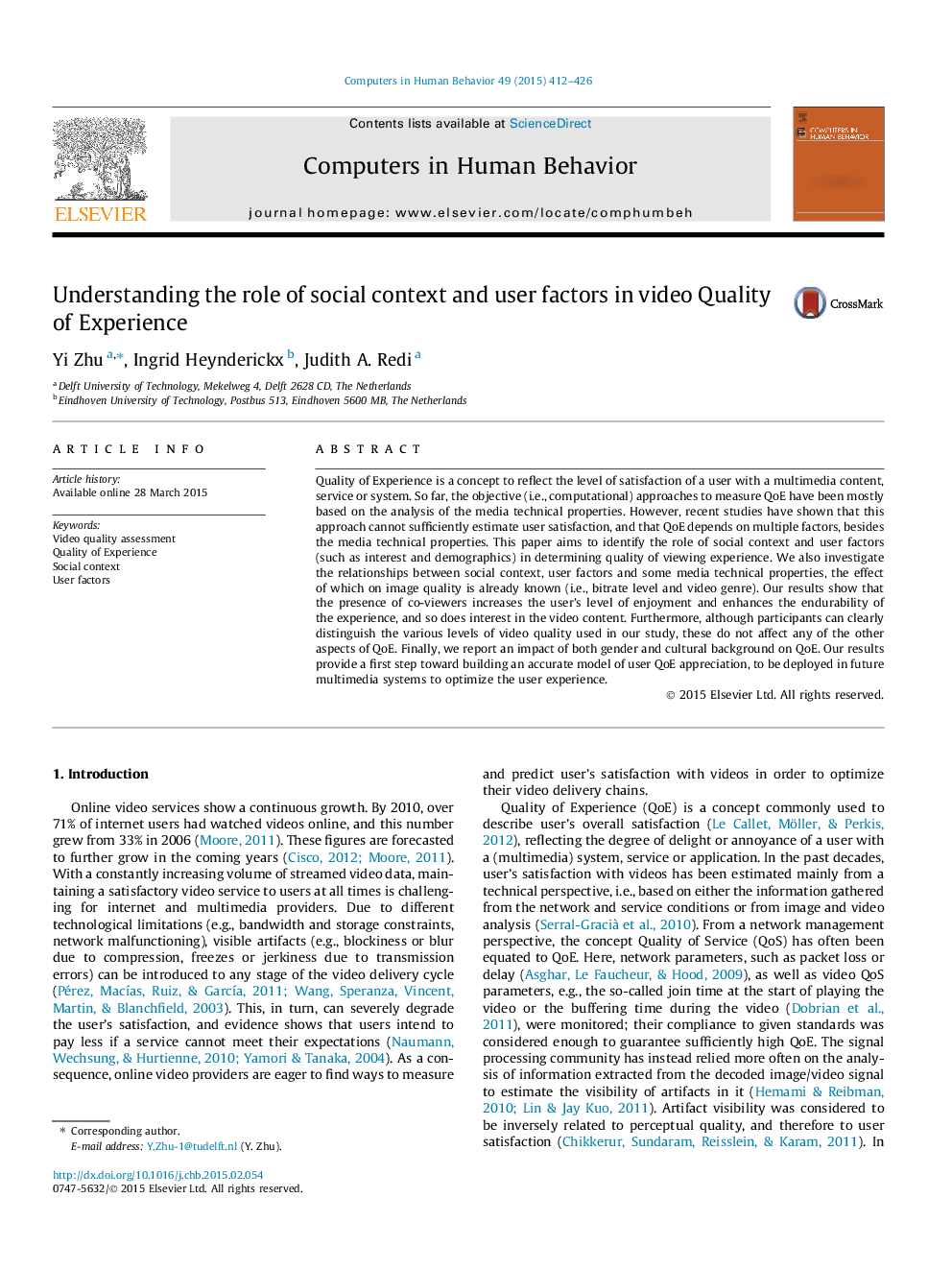| کد مقاله | کد نشریه | سال انتشار | مقاله انگلیسی | نسخه تمام متن |
|---|---|---|---|---|
| 350340 | 618442 | 2015 | 15 صفحه PDF | دانلود رایگان |
• We examine the impact of social context on compressed video Quality of Experience.
• We analyze the effect on QoE of user factors such as interest and demographics.
• Co-viewing videos increases user’s enjoyment and endurability of the experience.
• Low bitrate does not decrease video enjoyment, yet lower video quality is perceived.
• User interest increases QoE; this effect is suppressed by the presence of co-viewers.
Quality of Experience is a concept to reflect the level of satisfaction of a user with a multimedia content, service or system. So far, the objective (i.e., computational) approaches to measure QoE have been mostly based on the analysis of the media technical properties. However, recent studies have shown that this approach cannot sufficiently estimate user satisfaction, and that QoE depends on multiple factors, besides the media technical properties. This paper aims to identify the role of social context and user factors (such as interest and demographics) in determining quality of viewing experience. We also investigate the relationships between social context, user factors and some media technical properties, the effect of which on image quality is already known (i.e., bitrate level and video genre). Our results show that the presence of co-viewers increases the user’s level of enjoyment and enhances the endurability of the experience, and so does interest in the video content. Furthermore, although participants can clearly distinguish the various levels of video quality used in our study, these do not affect any of the other aspects of QoE. Finally, we report an impact of both gender and cultural background on QoE. Our results provide a first step toward building an accurate model of user QoE appreciation, to be deployed in future multimedia systems to optimize the user experience.
Journal: Computers in Human Behavior - Volume 49, August 2015, Pages 412–426
